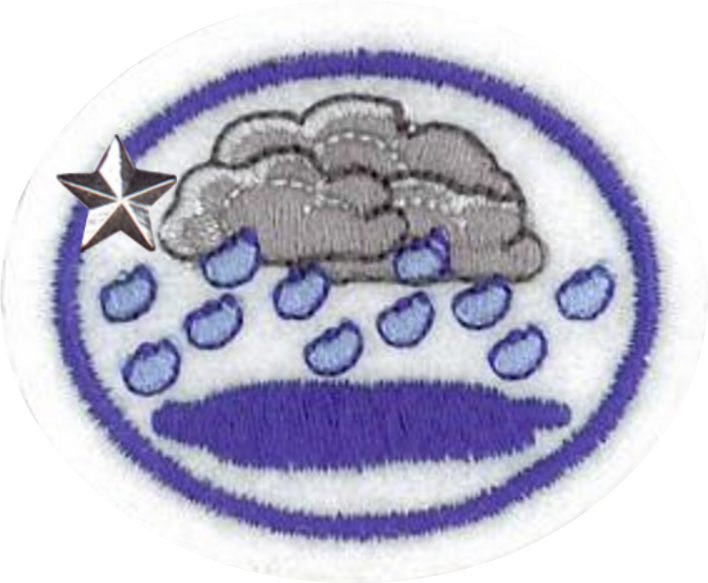Difference between revisions of "AY Honors/Water Science - Advanced"
DesignerBot (talk | contribs) m (insert nowiki-Tag infront of the honor_landing-Template so there is no paragraph infront of the language selector) |
Jomegat bot (talk | contribs) (Bot: Automated import of articles *** existing text overwritten ***) |
||
| Line 1: | Line 1: | ||
<translate> | <translate> | ||
| − | + | {{HonorLanding | |
|honorname=Water Science - Advanced | |honorname=Water Science - Advanced | ||
|skill=2 | |skill=2 | ||
| Line 6: | Line 6: | ||
|category=Nature | |category=Nature | ||
|authority=North American Division | |authority=North American Division | ||
| − | |insignia=Water_Science_Advanced.png | + | |insignia=Water_Science_Advanced.png |
|overview= | |overview= | ||
| − | | | + | }} </translate> |
| + | |||
| + | == {{Localize|Overview}}== | ||
| + | <translate> | ||
| + | |||
| + | </translate> | ||
| + | == {{Localize|The Challenging Part}} == | ||
| + | {{Localize|Challenging Part}} | ||
| + | |||
<b>{{reqreq|page={{PAGENAME}}|num=8}}</b> | <b>{{reqreq|page={{PAGENAME}}|num=8}}</b> | ||
| − | }} | + | [[Category:AY Honors/See Also/Water Science{{GetLangSuffix}}]] |
| − | + | {{CloseHonorPage}} | |
Revision as of 04:12, 19 March 2021
Skill Level
2
Year
2015
Version
12.11.2025
Approval authority
North American Division
Overview
The Challenging Part
The most challenging requirement of this honor is probably this:
8. On your own or with a group, perform the following experiment and explain in your results what can be done to keep clean water sources.
Investigating Pollution
There are many ways that water can become polluted. Aside from natural pollution such as soil, leaves and living organisms, people cause the most serious pollution. From agricultural fertilizers and pesticides to urban runoff and industrial waste, pollutants can seep into groundwater that is often used as a source for drinking water. Follow the instructions in this experiment to make polluted water and observe what pollutants may do to water supplies.
Materials:
- 8 one-pint jars(four with tight-fitting lids)
- Masking tape
- Funnel
- Cotton
- Motor Oil
- Vinegar
- Laundry detergent
- Soil
- Plastic Cups
Procedure:
- Label two sets of jars. Number four of the jars (1,2,3 and 4) with masking tape. Make sure these four jars have lids that will fit tightly. Fill this set of jars half full of water. Number the other four jars (5,6,7 and 8) with masking tape and set them aside.
- Observe the water in jar #1. Record your observations.
- Put one tablespoon of motor oil in jar #2. Tighten the lid and shake the jar carefully. Record your observations.
- Put a tablespoon of vinegar in jar #3. Tighten the lid and shake the jar carefully. Record your observations.
- Put a tablespoon of detergent in jar #4. Tighten the lid and shake the jar carefully. Record your observations.
- Place a piece of cotton in the funnel and then add some soil. Place the funnel on empty jar #5.
- Pour the contents of jar #1 (water only) into the funnel and let it drip through the funnel into jar #5.
- Move the funnel with the cotton and soil to empty jar #6. Pour the contents of jar #2 (oil and water) into the funnel and let it drip through the funnel into jar #6. Observe and record your observations.
- Move the funnel with the cotton and soil to empty jar #7. Pour the contents of jar #3 (vinegar) into the funnel and let it drip through the funnel into jar #7. Observe and record your observations.
- Move the funnel with the cotton and soil to empty jar #8. Pour the contents of jar #4 (detergent) into the funnel and let it drip through the funnel into jar #8. Record your observations.
Making Discoveries:
If these substances were added to a real water source, how might they affect the water?
How might animals and people be affected?
Can you think of instances where materials such as these (oil, chemical detergent, etc.) might have been spilled or dumped and possibly endangered a water supply?
What measures might a community take to prevent such accidents?


